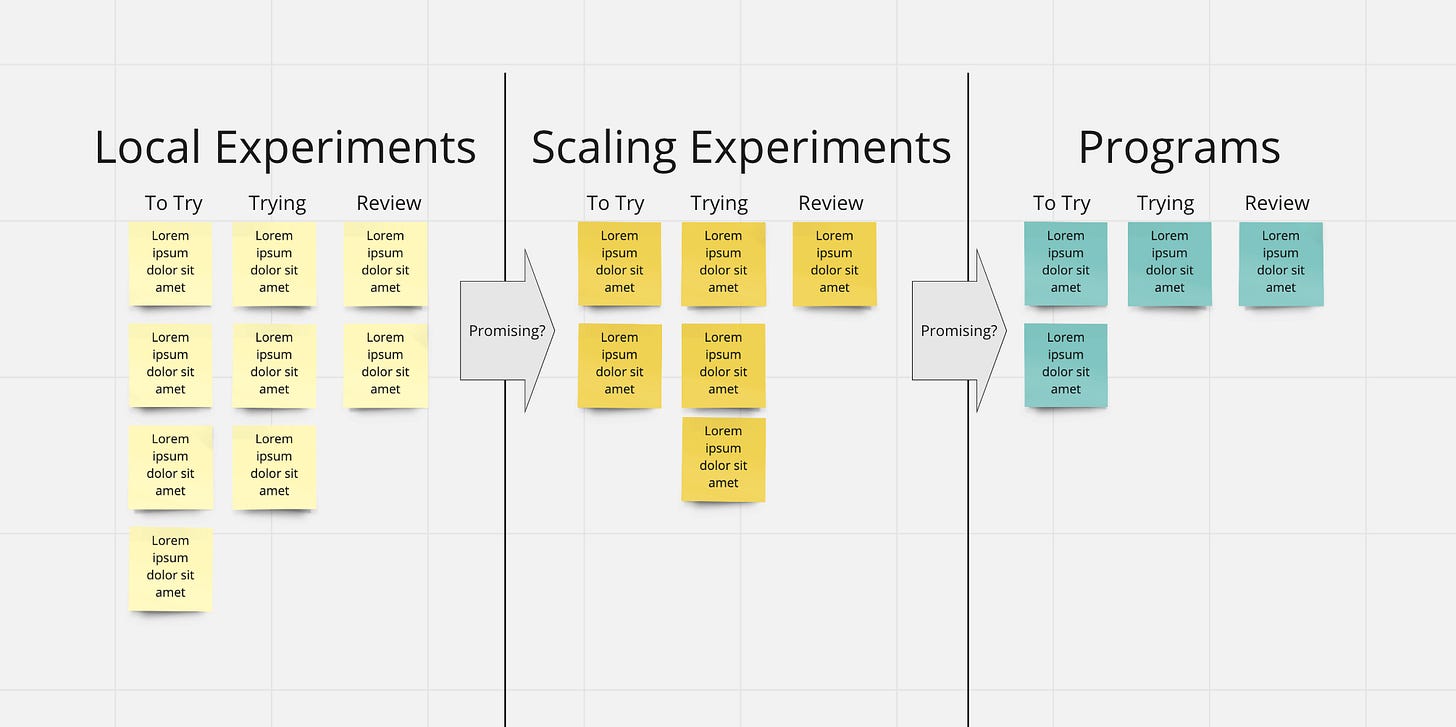Note: I’ve had to cancel my book pre-order. More information here. I am sorry.
Now on to TBM…
Successful change in organizations often goes through three stages:
Localized, safe to fail experiments
Experiments to see if scaling is possible and/or desirable
Full blown programs with the requisite support

A safe, local experiment is the start of the journey. We're not sure what will happen, but are willing to give something a try. If something goes wrong, no big deal. Success? Most local experiments are best left as local practices. There's no universal rule that every team should adopt what works for one team.
But say there's some traction and interest. "Scaling" a successful practice requires its own set of experiments. Is this approach a net-positive? How can we entice people to give it a try? How can we support early adoption? What signals will give us confidence it is actually working (or not working)? Again, there’s no rule requiring you to scale local successes, and there’s no guarantee you will get this right on the first try (or at all).
Finally, say the groundswell is there and we want to "go big". This is where turning it into an official program, with all the bells and whistles, helps. Early adopters tend to be fine with rough edges. But most people want more explanation, structure, and support. You'll need to educate, and to clear out mental bandwidth for the change to take hold. Experimentation still happens here, but it takes on a slightly different character.
This is a deliberate progression. It takes self-awareness and humility. You might need to go back a step, reassess your approach, or stop the effort altogether. Each transition is a liminal state of sorts...the nature of the work and approach changes. There's no room for egos and people intent on owning the change narrative.
When teams/leaders/managers try to jump ahead—or work in reverse—they run intro trouble.
For example:
Company Y copies Company Z and tries a big, top-down change effort with no local proof-points and local advocates.
By the time front-line feedback has bubbled up to "the top", and formal leaders have figured out what to do, the window of opportunity has closed. There's a new problem to solve.
Scaling out a local practice without concern for differences across teams. It worked there, so it will work everywhere! Not so fast…
Rolling something out department-wide without the support of a well-structured program.
Too much change in progress. Reactivity. Lack of visibility.
"Promising experiments, but we never commit! We never have a real plan."
"We commit to things that make no sense because we're pressured to have a plan!"
Continuous improvement internally is a lot like improving a product externally. It is tempting, but dangerous, to skip steps. A good activity for next week might be to put the various change initiatives in your org into the buckets above and observe where you may have skipped steps, worked in reverse, or not fully supported the effort.




This is extremely helpful. Also, stop apologizing. We get it and we'll be here when you're able to publish that book!